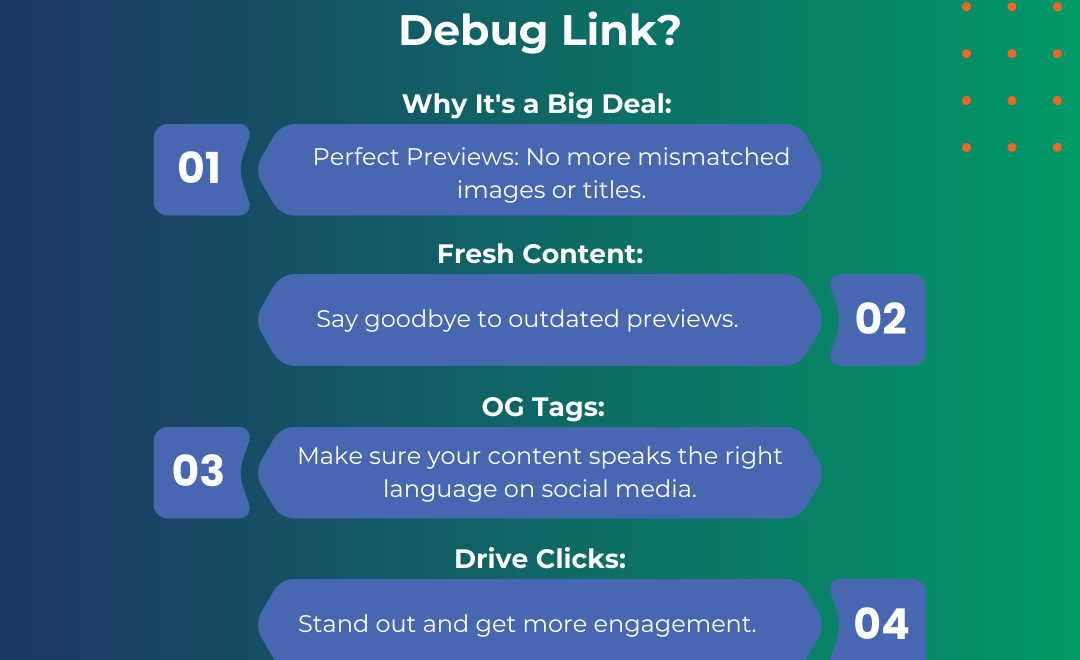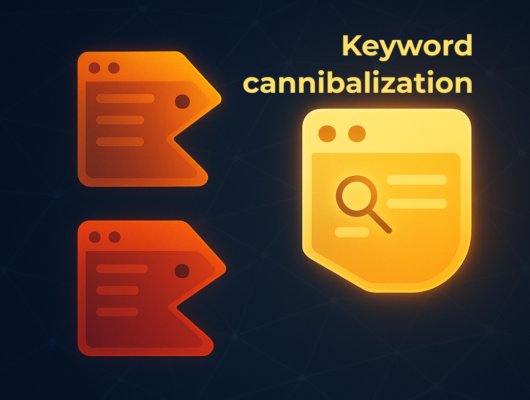What You’ll Learn About The Facebook Debug Link
For digital marketers and small business owners, social media is no longer just an add-on to a marketing strategy—it’s essential. But what happens when your carefully crafted content looks less than stellar when shared on Facebook? This is where the Facebook Debug Link steps in.
This blog will help you understand what the Facebook Debug Link (also known as the Facebook Sharing Debugger) is, why it’s critical for your Facebook marketing success, and how to use it to optimize your shared links.
By the end of this guide, you’ll have the knowledge needed to ensure your social media links not only look professional but also drive engagement and clicks.
What is the Facebook Debug Link?
The Facebook Debug Link refers to the URL you input into the Facebook Sharing Debugger tool. This tool’s primary purpose is to help you troubleshoot, preview, and optimize how your shared links will appear on Facebook—including their title, description, and featured image.
When you insert the URL of your webpage into the debugger, it scans the metadata of your page (such as Open Graph tags) and generates a preview of how the content will look when shared. Think of it as a behind-the-scenes quality control tool for your social media content.

Why the Facebook Debug Link Matters
Sharing links on Facebook is not just about posting a URL—it’s about making the right first impression. A well-optimized preview ensures your content grabs attention and conveys professionalism. Here are the key reasons why the Facebook Debug Link is important:
- Correct Display of Content
Mistakes in metadata can lead to incorrectly displayed previews—outdated descriptions, missing images, or incorrect titles. The Facebook Debug Link lets you preview how your link appears to users, giving you the chance to fix inaccuracies before they tarnish your brand image.
- Cache Management
Facebook caches link metadata for up to 30 days. If you update your webpage—say, to change the featured image or description—the new changes won’t reflect on shared links unless you force Facebook to clear the cache. The Debug Link enables you to refresh this cache, ensuring the latest version of your content is displayed.
- Identify and Fix Open Graph Tag Issues
Open Graph (OG) tags are the backbone of your content’s appearance on Facebook. Missing or improperly configured tags can distort how your content is displayed. The Facebook Debugger identifies issues, such as missing images or misaligned dimensions, and offers suggestions for improvement.
- Boost Engagement and SEO Impact
Posts with attractive previews are much more likely to receive clicks and user engagement. Additionally, properly configured metadata indirectly benefits your SEO by fostering higher click-through rates on your shared links.
- Maintain Brand Consistency
Poorly presented links can hurt your brand image. The Debug Link lets you fine-tune the aesthetics of your Facebook content, creating a polished and professional user experience.
Now that you understand its importance, here’s how to put the Facebook Debug Link to work for you.
How to Use the Facebook Debug Link
Using the Facebook Debugger tool doesn’t require special skills—you only need a webpage URL. Follow these steps to optimize your shared content.
Step 1: Open the Facebook Debugger Tool
Access the Sharing Debugger tool by visiting the official Facebook Debugger page.
Step 2: Paste Your URL
Copy the URL of the webpage you’d like to inspect and paste it into the text box that says “Enter a URL.” Click the “Debug” button.
Step 3: Review Metadata and Preview
The tool will display the Open Graph metadata for your webpage, including the title, description, and featured image. You’ll also see a preview of how your page will look when shared on Facebook.
Step 4: Fix Any Errors
Take note of any warnings, such as missing OG tags, incorrect image sizes, or outdated data. Common fixes include:
- Adding missing OG tags like `og:title`, `og:image`, and `og:description` to your webpage’s metadata.
- Ensuring featured images meet Facebook’s recommended dimensions of 1200×630 pixels.
Step 5: Refresh Metadata
If you’ve recently updated your page, click the “Scrape Again” button to force Facebook to refresh the cached data for your URL. This ensures your updates are reflected immediately.
Step 6: Test Again
Double-check the updated preview to confirm that all issues are resolved and your content is ready to shine.
Best Practices for Using the Facebook Debug Link
To maximize the benefits of the Facebook Debugger, follow these expert tips:
Tip 1: Prepare Metadata Before Your First Share
Before sharing any webpage link on Facebook, ensure that your metadata is optimized. Use Open Graph tags like these:
- `og:title` – Add a compelling headline.
- `og:description` – Include a brief but engaging summary.
- `og:image` – Use high-quality, correctly sized visuals.
Tip 2: Monitor Regularly
Set a schedule to periodically test your key webpages. Content updates, like seasonal offers or new blog posts, should always be debugged before sharing.
Tip 3: Pay Attention to Visuals
Remember, visuals are everything on social media. Choose high-quality images that accurately represent your webpage and meet Facebook’s display requirements.
Tip 4: Leverage Analytics
Monitor the performance of your Facebook posts to see whether optimization efforts are paying off. Adjust content previews based on engagement data.
Why Marketers and Small Businesses Can’t Ignore The Facebook Debug Link
For businesses relying on Facebook as part of their marketing strategy, the Debug Link isn’t a luxury—it’s a necessity. Ensuring that your links are displayed accurately can directly impact user engagement, click-through rates, and brand reputation.
By properly utilizing this free tool, you can take full control of how your content is presented, aligning it with your marketing goals and maximizing its reach.
Final Thoughts—Start Optimizing with the Debug Link Today
The Facebook Debug Link is an essential tool for anyone serious about maintaining a professional and polished social media presence. From fixing preview errors to ensuring your brand experience stays consistent, this tool empowers you to take full control of how audiences interact with your shared content.
If you haven’t tried the Facebook Debugger yet, now is the time. Make sure every link you share represents your brand at its absolute best.
Related Articles
Explore more insights on optimizing your social media presence and enhancing your digital marketing strategies:
Local SEO Services for Small Business: A Comprehensive Guide
How Voice Search is Changing SEO for Home Automation Companies
Further Reading
For additional insights and expert recommendations, consider these external resources:







